Table of Contents
Omega Speedmaster – The First Watch worn on the Moon
Omega Speedmaster was the First watch on the moon and also the first watch worn on the moon. This is the intriguing story about the Moonwatch.
– On July 16, 1969 the Apollo 11 started its epic journey to the Moon from Kennedy Space Center, Florida. On board were astronauts Neil Armstrong, Buzz Aldrin and Michael Collins – all wearing the special Moonwatch – and one of the heroes of this story – The Omega Speedmaster Professional.
This is a story of outstanding watchmaking in the 1950’s and 1960’s as well as a story of remarkable nationwide focus to put a man on the Moon and how these two paths cross.
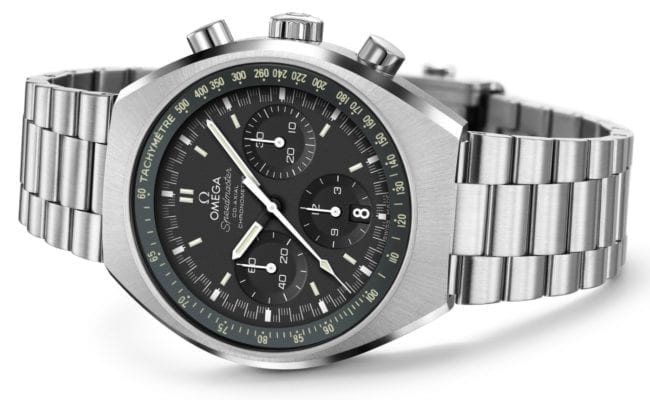
The story of the first watch on the moon begins 12 years prior to the first lunar landing
The Speedmaster story starts 12 years earlier in January 1957, when Omega produces the first Speedmaster in their headquarters in Biel, Switzerland.
The first model, the reference CK 2915, was designed by Claude Baillod and powered by the Omega Caliber 321 movement, developed in 1946 by Albert Piguet.
The “Speedmaster” name came from the model’s unique tachymeter scale bezel (in brushed stainless steel). It also followed the naming tradition set by prior Omega brands – Seamaster and Railmaster.
All of the early Speedmasters used the same caliber 321 movement. It was replaced in 1968/69 with the introduction of the caliber 861, which was used in the “Moonwatch”. The watches used for Apollo 11’s mission were the 1967 “pre-moon” 321 versions.
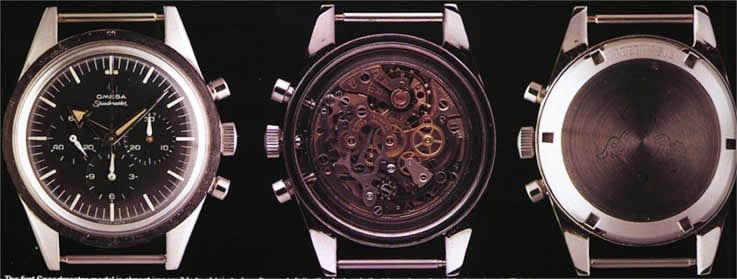
The Omega Speedmaster was first introduced and presented as a sports and racing chronograph and at this point not meant for space…but as we will soon see, history wanted something else for the watch.
(Below advert from late 1950′)
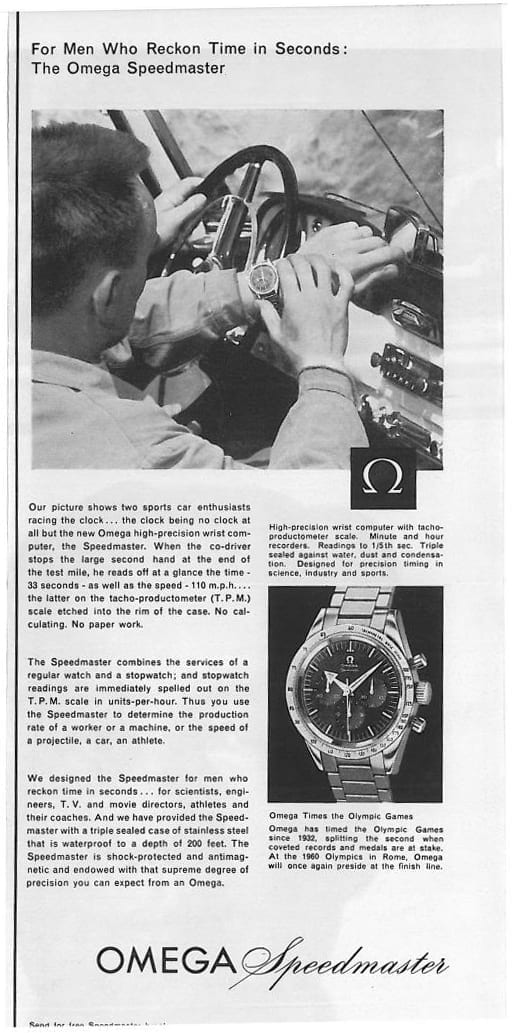
John F. Kennedy declares “We choose to go to the moon”
At about the same period of time, on the other side of the Atlantic – in USA – a national goal is set by President John F. Kennedy, which will forever impact the story of the Speedmaster…
In his famous speech from Sep 12, 1962, John F. Kennedy announces his and the American nations goal of “Landing a man on the moon and returning him safely to Earth within a decade”. From this point on enormous resources were invested in the Apollo program (started in 1961) to fulfill the goal.
NASA needed a reliable watch for the mission
In 1964, the story of the Speedmaster and Americas Space Program is starting to cross paths, when NASA is looking to certify a watch to companion the astronauts in space.
The requirements were:
- It has to be a watch with chronograph function for precise timing
- Manual winding, because they did not trust an automatic movement to work properly in zero gravity conditions.
The watch would also have to:
- Work in a vacuum
- Face exposure to the rays of the Sun
- Tolerate extreme temperatures and
- Withstand the forces of take-off and re-entry
What watches did NASA test?
NASA did not want to commission a new watch, because it would take too much time. Instead they acquired several watches, already on the market, from Omega, Rolex, Longines and Hamilton.
The selected watches went through a rigorous testing period which lasted for about 6 months.
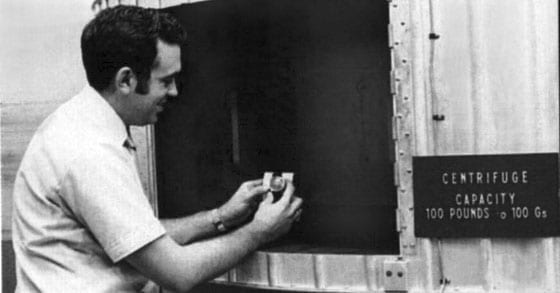
Only the watch from Omega survived all tests and NASA declared it operational for space exploration and flight certified.
Operational and environmental tests of the three selected chronographs have been completed; and, as a result of the test, Omega chronographs have been calibrated and issued to three members of the Gemini Titan III crews.
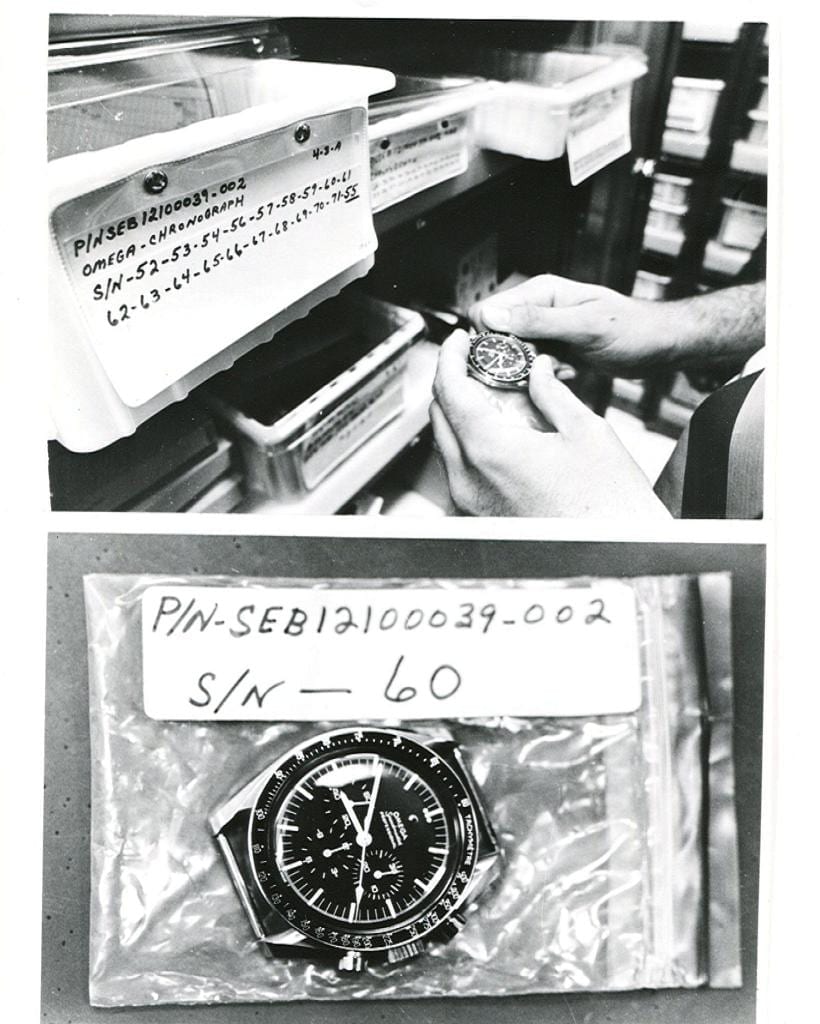
One interesting fact is, that in 1965 the same Omega Speedmaster model which NASA tested and approved, cost just $82.50.
Project Gemini – The Speedmasters first step towards the Moon
Project Gemini which was a part of the Apollo program was started in 1962 as a follow-up to the previous Mercury Program. Its objective was to develop space travel techniques in support of Apollo, which had the goal of landing men on the Moon. A total of 10 manned flights were made between 1965 and 1966.
The first NASA approved Speedmasters were worn by astronauts Gus Grissom and John Young on the Gemini 3 mission on March 23, 1965.
Just three months after Gemini 3, Ed White made the historical “first American spacewalk” during the Gemini 4 mission, wearing a Speedmaster on his left wrist, when he stepped out of the lunar module(June 3, 1965). All Gemini crews wore the Speedmaster until the end of Project Gemini in 1966.
Read more about Project Gemini
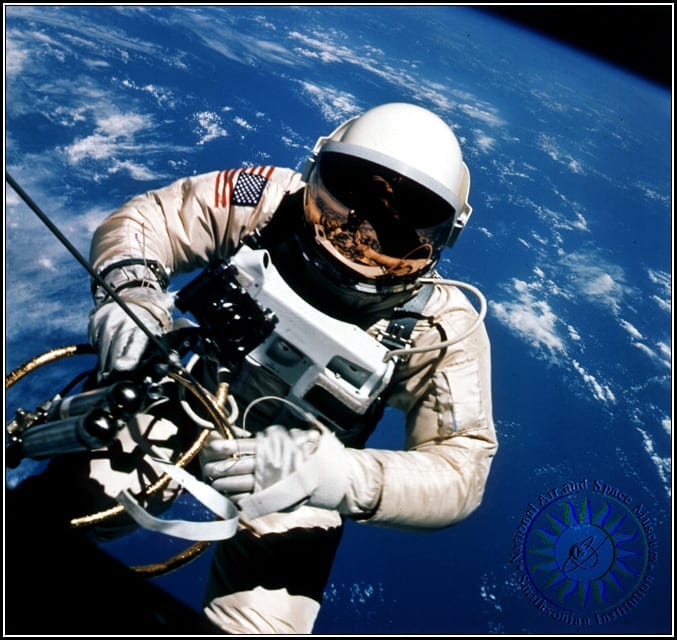
Omega Speedmaster Professional is launched
After the Gemini 4 mission, the watch that was introduced in 1957 as Omega Speedmaster, now got the addition Professional to its name. This was a way to closer connect the Speedmaster brand with the American space program.
Also the 105.012 model was updated to the 145.012 model. Later these two models would be the watches worn by the Apollo astronauts on the Moon. These are today seen as The Original Moonwatches.
Apollo Program and the first walk on the lunar surface
With Project Gemini meeting its objectives the next phase of the Apollo Program “to put a man on the moon” was started. It would take 11 attempts before a successful lunar landing was made. Read more about the Apollo Program
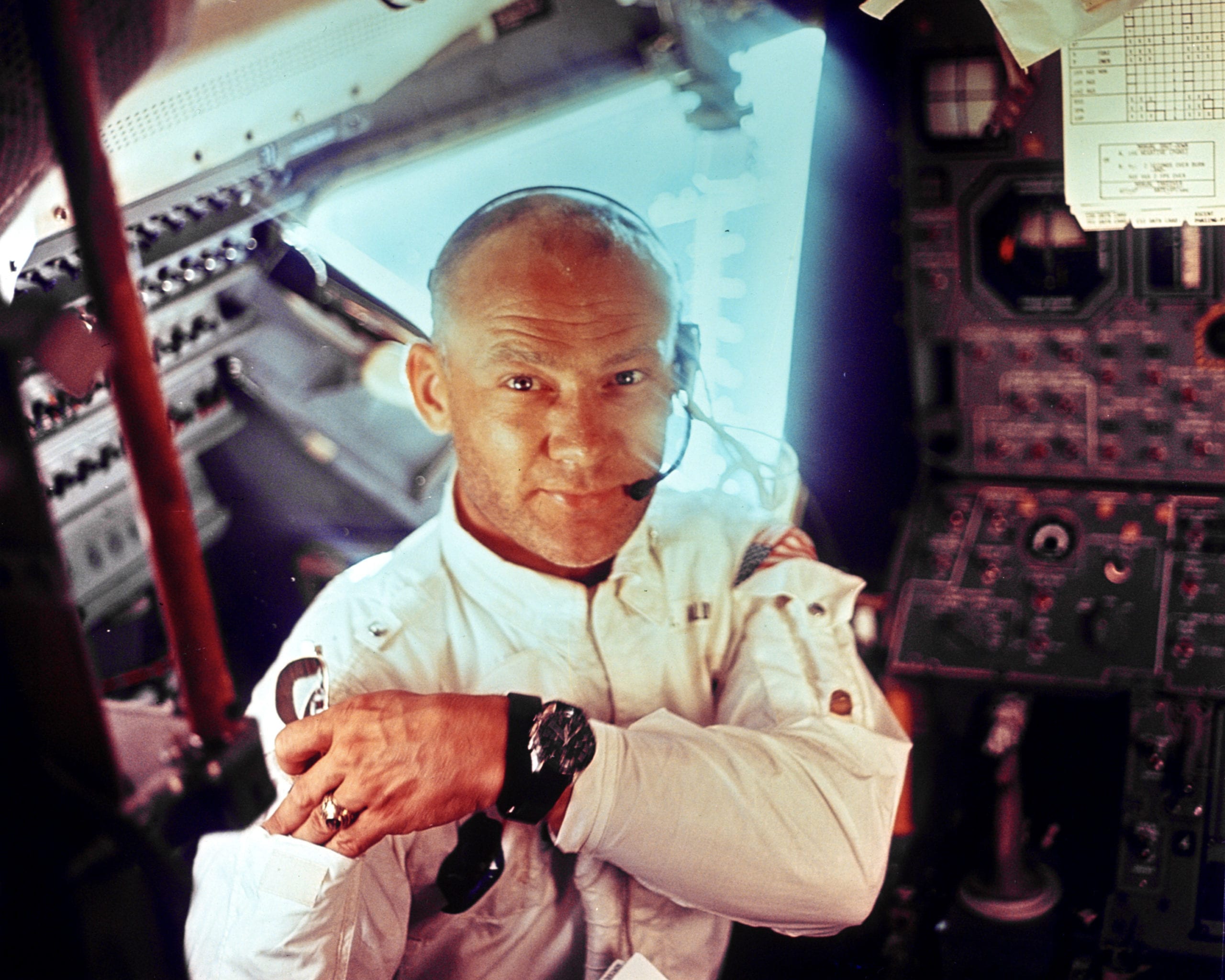
Buzz wearing his Speedmaster watch during Apollo 11.
A small step for man, One giant leap for Omega Speedmaster Moonwatch
On July 16, 1969, 13:32:00, the Apollo 11 spacecraft, with the crew consisting of Neil Armstrong, Buzz Aldrin and Michael Collins, were preparing for the lift off from the Kennedy Space Center. The control room counted down from 10, 9, 8… and soon the journey which would prove to be the one that landed the first humans on the Moon was started.
With the world’s eyes on this amazing lunar adventure, Neil Armstrong, as the first human, finally stepped onto the lunar surface on July 21 at 02:56 UTC.
Did Neil Armstrong wear a watch on the moon?
Our beloved Speedy, was not there on the wrist of Mr. Armstrong as he walked on the Moon. He left his watch in the lunar module as a backup to the onboard timing device which did not work properly at the time.
The first time the Omega Speedmaster Professional was worn on the Moon, was when Buzz took his first steps on the lunar surface. So Buzz Aldrin’s Speedmaster was the first real “Moonwatch”.
This was a defining moment for the Speedmaster as it became not “just” the first watch on the Moon, but also the first and only watch to be worn on the surface of the Moon.
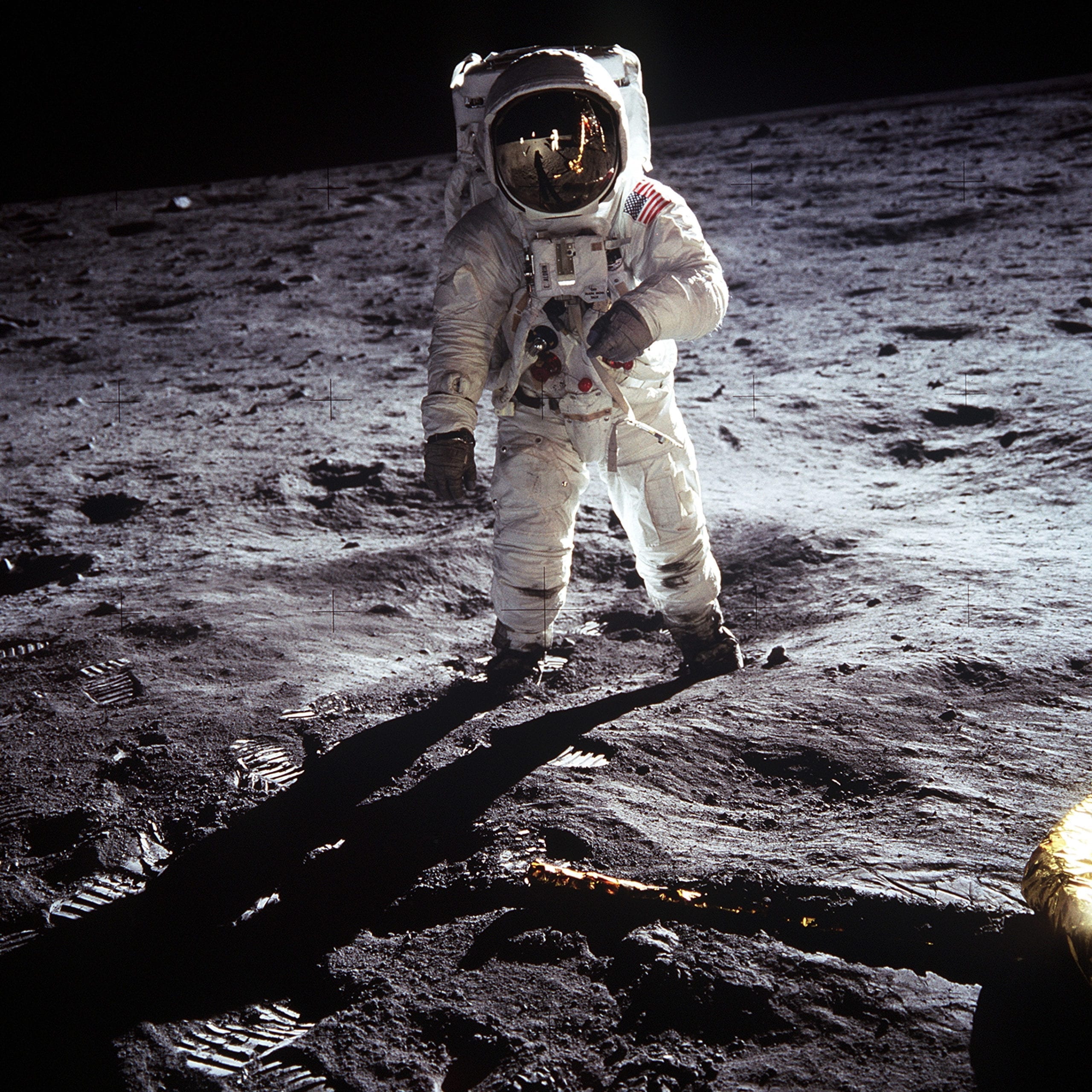
Buzz Aldrin wearing the Speedmaster on his lunar walk
It was optional to wear while we were walking on the surface of the moon … few things are less necessary when walking around on the moon than knowing what time it is in Houston, Texas. Nonetheless, being a watch guy, I decided to strap the Speedmaster onto my right wrist around the outside of my bulky spacesuit.
What happened to Buzz Aldrin’s Moonwalk watch?
The watch that Aldrin wore during his moonwalk was unfortunately lost when sent to the Smithsonian Air and Space Museum, making its actual model number unknown for a long time. The common belief was that Aldrin wore a 145.012 model.
Recent investigations made by The Omega Museum in collaboration with James H. Rogan (who worked with NASA at the time) and the Smithsonian Institute has made it clear that the Speedmaster Aldrin wore during his moonwalk was the ST105.012 model. (Source: Monochrome-Watches)
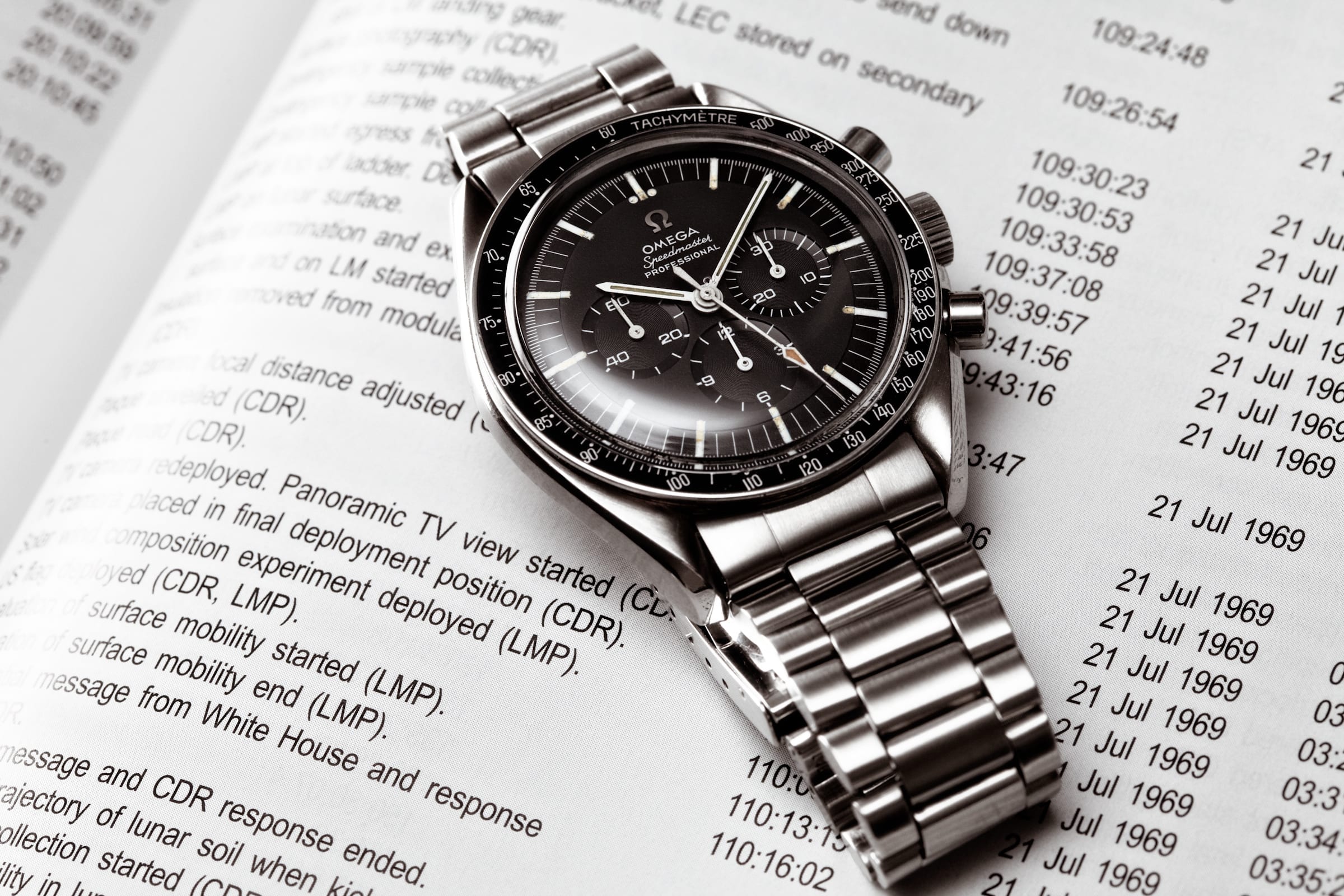
– Cal. 321 chronograph movement
– Thomas Preik exhibition caseback
– Omega 1171/633 bracelet
Omega Speedmaster Professional 1967 ref. 145.012
Omega Watch Company receives the Snoopy Award
During the 1970 Apollo 13 mission, there was an explosion is one the oxygen tanks of the spacecraft, making it impossible for the crew to land on the Moon as planned. In this critical moment, astronaut Jack Swigert had to use his Speedmaster to accurately time a course correction, to bring the crew back to Earth.
The course correction was successful and the crew was safely brought back to Earth.
For this potentially lifesaving part the iconic Speedmaster played for the American astronauts, the Omega Company was awarded the Snoopy Award. “The Silver Snoopy Award” or more commonly known as the “Snoopy Award” is given to NASA employees and contractors for achievements in human flight safety or mission success.
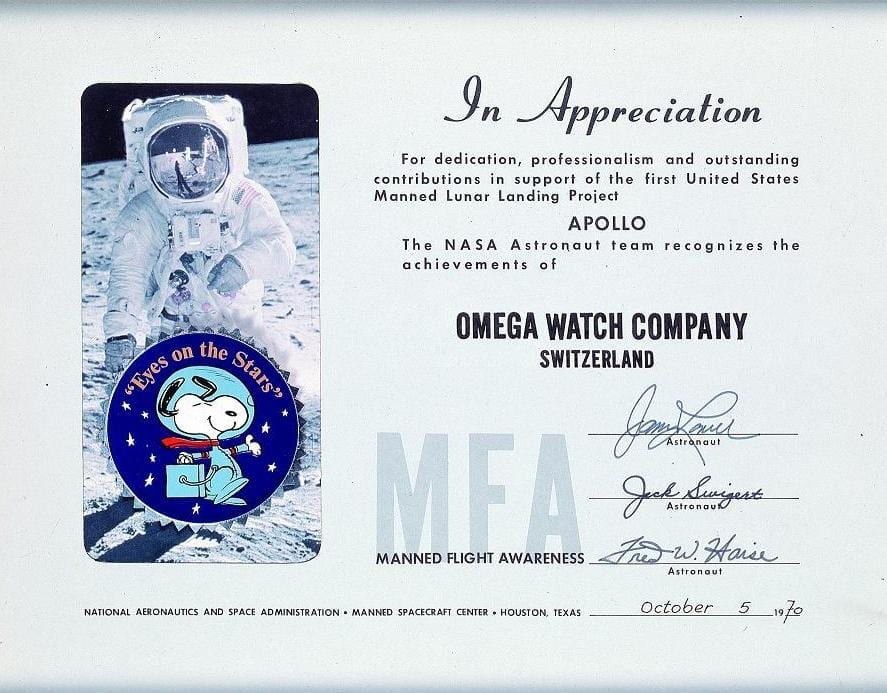
In Appreciation for dedication, professionalism, and outstanding contributions in support of the first United States Manned Lunar Landing Project Apollo. The NASA Astronaut team recognizes the achievements of Omega Watch Company, Switzerland.
Since 1969 Omega has been able to promote its Speedmaster chronograph as the “First Watch on the Moon”
Here you can see some of the print adverts from the time.
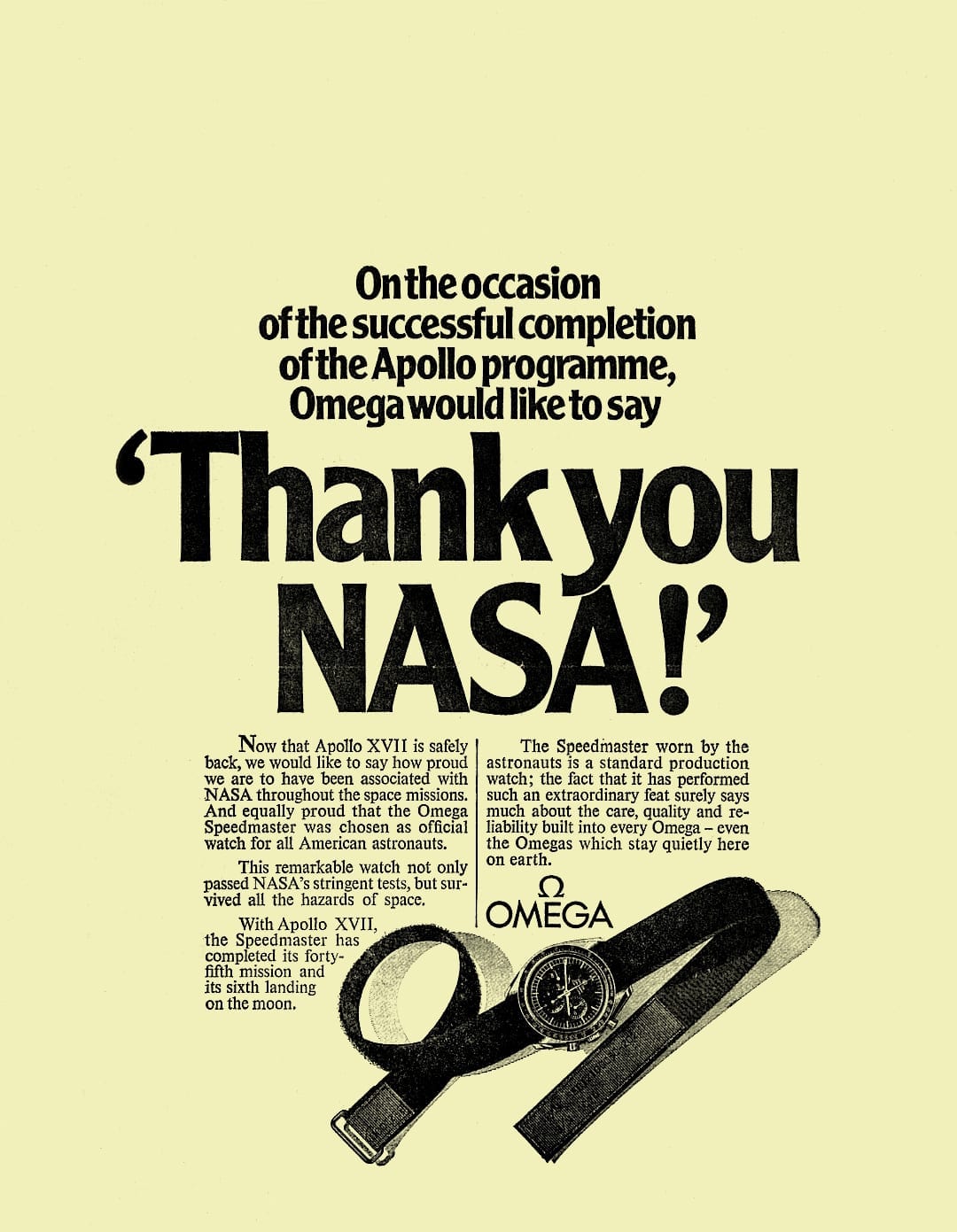
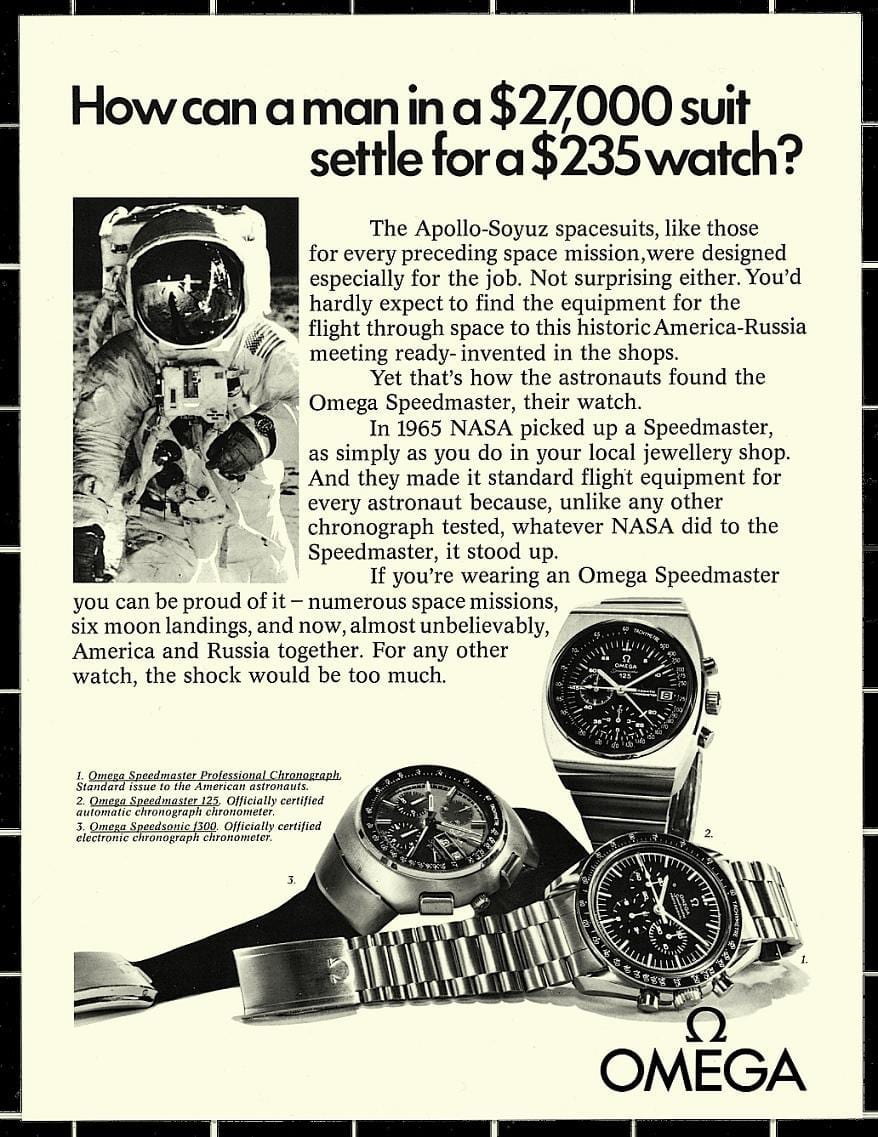
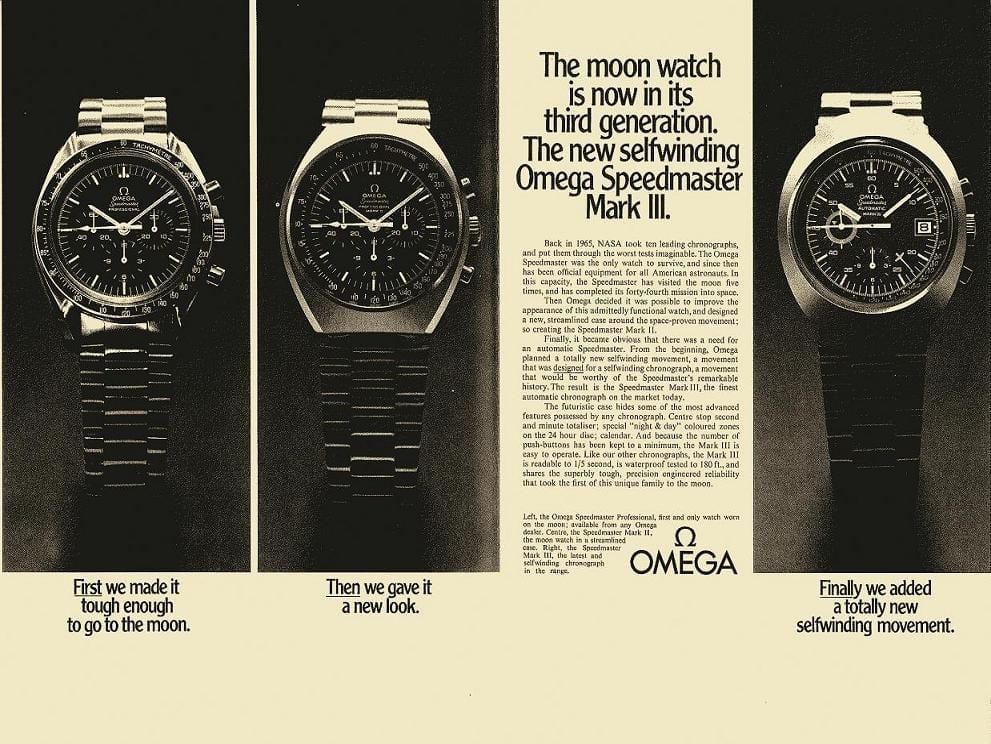
The iconic Omega Speedmaster Professional – The Moonwatch
The Speedmaster has been NASA’s choice since March of 1965 and have been worn in all of NASA’s totally 118 manned space missions.
This is a remarkable achievement by a watch which has been around essentially unchanged for more than half a century
The Omega Speedmaster Professional has rightfully earned the right to be called “The Moonwatch”
What was the first watch in space?
The first watch to be worn in open space was the white-face Strela (Russian for “arrow”. Cosmonaut Alexey Leonov wore it on his wrist when he left for the first space walk from the Voskhod 2 spacecraft on 18 March 1965.
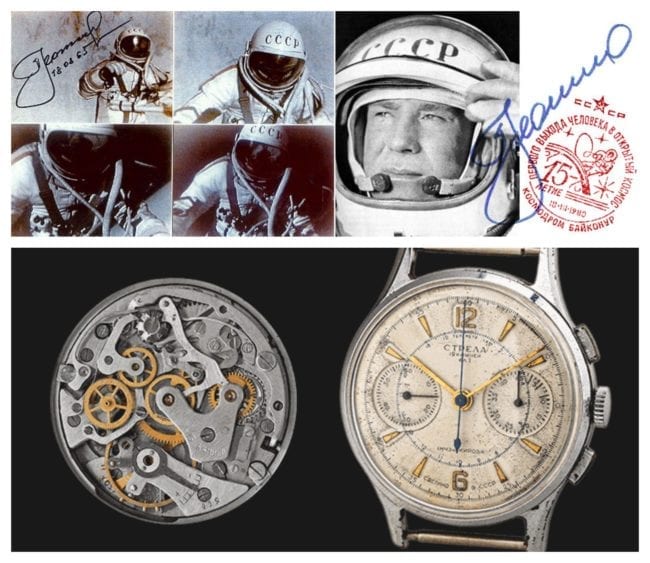
What watches have been worn on the moon?
This far I have found that the watches that have actually been worn on the lunar surface are the following:
- Omega Speedmaster (several types)
- Bulova Moon Watch
- Rolex GMT Masters
In case someone has info about other watches that have been on the lunar surface, please comment below.
Videos of some current Speedmaster models
Other Omega Speedmaster Videos
More reading on the Speedmaster Professional
- https://www.omegawatches.com/planet-omega/heritage/museum
- https://en.wikipedia.org/wiki/Omega_Speedmaster
- http://www.omega-addict.com/historyspm.html
- https://monochrome-watches.com/omega-speedmaster-history-part-1-early-pre-moons/
- https://www.omegawatches.com/watches/speedmaster/moonwatch/professional/product



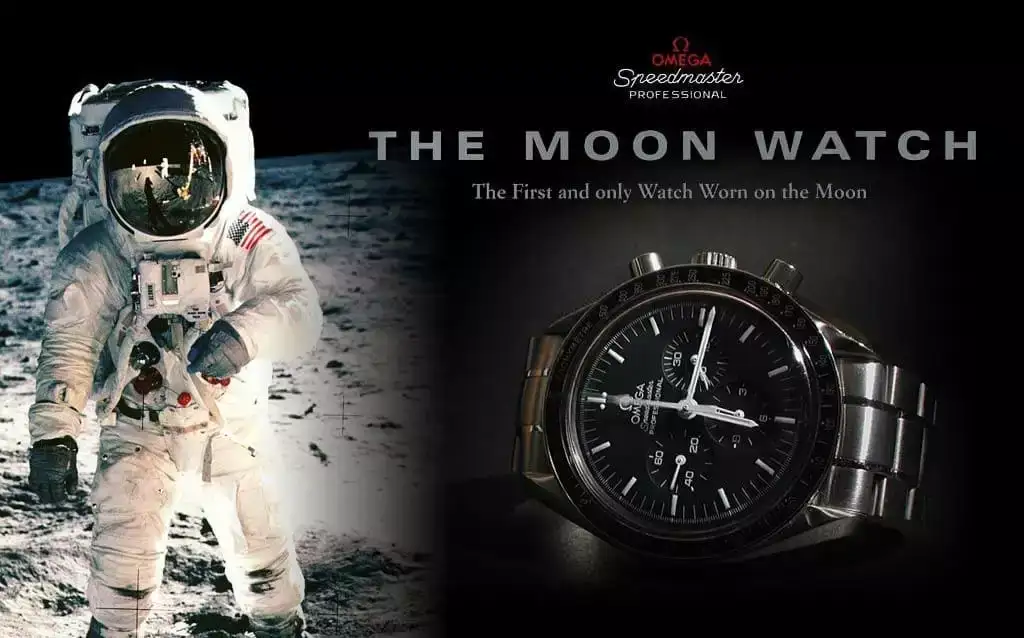
COMMENTS
Credit: Strela watch image: https://strela-watch.de/company/strela-watch-history/